Sql Management Studio Intellisense Not Working
Identifying the Issue:
1. SSMS IntelliSense not working:
When SQL Management Studio Intellisense stops offering suggestions or fails to complete code, it is referred to as SSMS IntelliSense not working. This issue can occur due to various reasons, such as incorrect settings, compatibility issues, or corrupted installation.
2. SQL Server IntelliSense not working:
Similar to SSMS IntelliSense, SQL Server IntelliSense not working refers to the failure of IntelliSense within a specific SQL Server instance. This can be caused by outdated or misconfigured IntelliSense settings within the SQL Server instance.
3. How to enable auto-suggestion in SQL Server Management Studio:
If the auto-suggestion feature is not enabled in SQL Server Management Studio (SSMS), it can restrict the functionality of IntelliSense. Users must ensure that auto-suggestion is enabled in the SSMS settings.
4. SQL Server Management Studio does not show tables:
Sometimes, Intellisense may not list tables or other database objects, making it challenging to write queries efficiently. This issue can be caused by missing or outdated metadata, incorrect permissions, or database connection issues.
5. SQL Prompt not working:
SQL Prompt is a third-party tool that enhances SSMS IntelliSense capabilities. If SQL Prompt stops working, it can impact IntelliSense and prevent it from offering suggestions or completing code.
6. Auto complete SQL Server Management Studio:
Auto-completion is an essential feature that assists in writing code more quickly and accurately. If auto-completion stops working in SQL Server Management Studio, it can adversely affect productivity.
Troubleshooting SQL Management Studio Intellisense Issues:
1. Checking Intellisense Settings:
First, verify that IntelliSense is enabled in SQL Management Studio. Go to “Tools” > “Options” > “Text Editor” > “Transact-SQL” > “IntelliSense” and ensure that all the relevant checkboxes are checked.
2. Updating SQL Management Studio:
It is crucial to keep SQL Management Studio up to date to ensure compatibility with the latest database systems. Check for updates through the “Help” menu and install any available updates.
3. Verifying Compatibility with the Database:
Ensure that the version of SQL Management Studio being used is compatible with the database system. Older versions of SQL Management Studio may not support the latest database features, affecting IntelliSense functionality.
4. Refreshing Intellisense Cache:
If IntelliSense suggestions are not being displayed or are outdated, refreshing the Intellisense cache might resolve the issue. Go to “Edit” > “IntelliSense” > “Refresh Local Cache” or press the “Ctrl + Shift + R” shortcut key to refresh the cache.
5. Repairing SQL Management Studio Installation:
If all else fails, repairing the SQL Management Studio installation can resolve any underlying issues. Navigate to the Control Panel, locate the SQL Management Studio installation, and select the repair option.
FAQs:
Q: SSMS IntelliSense not working. What could be the possible cause?
A: SSMS IntelliSense may not work due to disabled settings, outdated software, or corrupted installation.
Q: How can I enable auto-suggestion in SQL Server Management Studio?
A: To enable auto-suggestion, go to “Tools” > “Options” > “Text Editor” > “Transact-SQL” > “IntelliSense” and ensure the relevant checkboxes are selected.
Q: Why does SQL Server Management Studio not show tables?
A: The tables may not be displayed in Intellisense due to missing metadata, incorrect permissions, or database connection issues.
Q: My SQL Prompt is not working. Will it affect IntelliSense?
A: Yes, a malfunctioning SQL Prompt can impact IntelliSense as they work together to provide code suggestions.
Q: How can I auto complete SQL Server Management Studio?
A: Auto-completion in SQL Server Management Studio allows for faster coding. Ensure the auto-complete settings are enabled in the Intellisense options.
Q: What are the shortcut keys for SQL Management Studio IntelliSense?
A: The shortcut key “Ctrl + Space” triggers IntelliSense suggestions, “Ctrl + Shift + R” refreshes the Intellisense cache, and “Ctrl + P” opens the template explorer.
In conclusion, SQL Management Studio Intellisense not working can be a frustrating experience for users. However, with the troubleshooting steps provided in this article, one can identify and resolve the issue effectively. By ensuring the correct settings, updating the software, and refreshing the cache, users can restore the full functionality of IntelliSense in SQL Management Studio.
How To Enable Complete Intellisense Features In Sql Server
Why Intellisense Is Not Working In Ssms?
IntelliSense is a powerful feature provided by SQL Server Management Studio (SSMS) that enhances the productivity and efficiency of database developers and administrators. It offers auto-completion, code suggestions, and syntax checking, allowing users to write code faster and with fewer errors. However, there are times when IntelliSense may not work as expected, leading to frustration and decreased productivity. In this article, we will explore possible reasons why IntelliSense may not be working in SSMS and provide solutions to resolve these issues.
1. Outdated SSMS version:
One of the primary reasons why IntelliSense may not work in SSMS is the usage of an outdated version. Microsoft regularly releases updates and bug fixes for SSMS, including enhancements for IntelliSense. Therefore, it is essential to ensure that you are using the latest version of SSMS to take advantage of all the improvements in IntelliSense functionality.
Solution: Check for updates on the Microsoft website or use the built-in update mechanism within SSMS to ensure you have the latest version installed.
2. Intellisense not enabled:
By default, IntelliSense should be enabled in SSMS. However, due to various reasons, it may get disabled inadvertently.
Solution: To enable IntelliSense, go to the “Tools” menu in SSMS, select “Options,” navigate to “Text Editor,” and then choose the language you are using (e.g., Transact-SQL). Under the “Statement completion” section, ensure that “Enable IntelliSense” is checked. Additionally, make sure that the checkbox for “Suggestions” is also selected to enable code suggestions.
3. Database not connected or unavailable:
IntelliSense relies on a connection to a specific database to retrieve metadata and provide suggestions. If the database is not connected or unavailable, IntelliSense will not function correctly.
Solution: Verify that you are connected to the correct database in SSMS. If the connection is lost, reconnect to the database. Ensure that the database server is running and accessible.
4. Object caching issue:
Sometimes, IntelliSense may fail to update its cache, leading to outdated or missing suggestions. This can happen due to various reasons such as database schema changes or metadata conflicts.
Solution: Press “Ctrl+Shift+R” or go to the “Edit” menu and click on “IntelliSense,” then select “Refresh Local Cache.” This action will force IntelliSense to update its cache and provide the latest suggestions.
5. Memory limitations:
If SSMS is running low on memory, IntelliSense may not work optimally. When memory usage exceeds a certain threshold, SSMS might prioritize executing queries over providing real-time IntelliSense functionality.
Solution: Check if SSMS is consuming excessive memory by monitoring the system’s resource usage. Close unnecessary applications or processes to free up memory for SSMS. Consider upgrading your system’s RAM if memory limitations persist.
6. Errors in the code:
IntelliSense relies on accurate and error-free code to provide suggestions and auto-complete options. If there are syntax errors or missing objects in the code, IntelliSense can significantly be affected.
Solution: Make sure that your code is valid and free from errors. Fix any syntax errors highlighted by the editor before expecting IntelliSense to work correctly.
FAQs:
Q1. How can I tell if IntelliSense is enabled in SSMS?
A1. To check if IntelliSense is enabled, go to the “Tools” menu, select “Options,” navigate to “Text Editor,” and choose the language you are using (e.g., Transact-SQL). Under the “Statement completion” section, ensure that “Enable IntelliSense” is checked.
Q2. Why am I not seeing suggestions or auto-complete options in SSMS?
A2. Ensure that the checkbox for “Suggestions” is selected under the IntelliSense options. Also, confirm that you are connected to a valid and accessible database, as IntelliSense relies on database metadata to provide suggestions.
Q3. I have updated SSMS, but IntelliSense is still not working. What should I do?
A3. In some cases, an update may not resolve all IntelliSense issues. Try refreshing the local cache by pressing “Ctrl+Shift+R” or going to the “Edit” menu, selecting “IntelliSense,” and choosing “Refresh Local Cache.”
Q4. Can IntelliSense work with third-party or non-Microsoft databases?
A4. IntelliSense is primarily designed to work with Microsoft SQL Server and its related products. While it may partially work with third-party databases or non-Microsoft products, its functionality and reliability may vary.
In conclusion, IntelliSense is a valuable tool within SSMS that enhances coding productivity. If IntelliSense is not working correctly, it may be due to various reasons such as outdated software, disabled settings, database connection issues, object caching, memory limitations, or code errors. By following the provided solutions and troubleshooting steps, users can usually resolve IntelliSense issues and regain the benefits of this powerful feature.
How To Enable Intellisense In Sql Server Management Studio?
SQL Server Management Studio (SSMS) is a powerful tool for managing and developing SQL Server databases. One of the most useful features of SSMS is IntelliSense, an intelligent code completion and suggestion system. IntelliSense makes coding faster and more efficient by providing suggestions and auto-completion for keywords, functions, tables, and columns. However, sometimes IntelliSense may not be enabled by default or may stop working for various reasons. In this article, we will discuss how to enable IntelliSense in SQL Server Management Studio and address some frequently asked questions about this feature.
Enabling IntelliSense in SSMS is a relatively straightforward process. Here’s how you can do it:
1. Open SQL Server Management Studio and click on “Tools” in the menu bar.
2. From the drop-down menu, select “Options.”
3. In the Options dialog box, navigate to “Text Editor” >> “Transact-SQL” >> “IntelliSense.”
4. Ensure that the checkbox for “Enable IntelliSense” is checked.
5. Depending on your SQL Server version, you may also need to select the “Enable IntelliSense for” option and choose the appropriate version from the drop-down menu.
6. Click “OK” to save the changes.
Once you have enabled IntelliSense, you should start experiencing its benefits immediately. As you type SQL statements, IntelliSense will provide suggestions for keywords, objects, and other relevant options. You can use the up and down arrow keys to navigate through the suggestions and press the Tab key to accept a suggestion.
However, there are cases when IntelliSense might not work as expected, even after enabling it. Let’s address some frequently asked questions and troubleshooting tips regarding IntelliSense in SQL Server Management Studio:
FAQs:
Q1. Why is IntelliSense not working in SQL Server Management Studio?
There can be several reasons why IntelliSense is not working. One common issue is that IntelliSense might not be enabled. You can follow the steps mentioned earlier in the article to enable it. Another cause could be the version conflict between SQL Server and SSMS. Ensure that you have the compatible versions installed. Additionally, IntelliSense might not work correctly if the underlying database structure has recently changed or is very large. In such cases, refreshing the IntelliSense cache can help.
Q2. How can I refresh the IntelliSense cache?
To refresh the IntelliSense cache, go to “Edit” >> “IntelliSense” >> “Refresh Local Cache” or use the keyboard shortcut “Ctrl + Shift + R”. This action reloads the IntelliSense cache and updates it with the latest database schema. Refreshing the cache can resolve issues like missing objects or out-of-date suggestions.
Q3. Why are some object names not showing up in IntelliSense?
If you recently added or modified objects in your database, IntelliSense may not immediately recognize them. In such cases, refreshing the IntelliSense cache can help update the information and make the object names appear. Additionally, ensure that your SQL Server connection is active and you have appropriate permissions to access the objects.
Q4. Can I customize IntelliSense preferences and options in SSMS?
Yes, IntelliSense provides several customizable options to enhance your coding experience. In the “IntelliSense” section of the Options dialog box, you can configure settings such as suggestion behavior, case sensitivity, object filtering, and more. Explore the different options available to find the setup that suits your needs best.
In conclusion, IntelliSense is a valuable feature in SQL Server Management Studio that significantly improves coding productivity. Enabling and troubleshooting IntelliSense can be a breeze with the right knowledge and steps. By following the instructions mentioned in this article and considering common troubleshooting scenarios, you can ensure that IntelliSense works reliably in SSMS and helps you write SQL code more efficiently. Happy coding!
Keywords searched by users: sql management studio intellisense not working SSMS IntelliSense not working, SQL Server IntelliSense not working, How to enable auto suggestion in sql server management studio, Sql server management studio does not show tables, SQL Prompt not working, Auto complete SQL Server Management Studio, Bật IntelliSense trong SQL Server, Shortcut key sql server management studio
Categories: Top 63 Sql Management Studio Intellisense Not Working
See more here: nhanvietluanvan.com
Ssms Intellisense Not Working
SQL Server Management Studio (SSMS) is a powerful tool for managing and administrating Microsoft SQL Server databases. One of the most handy features of SSMS is IntelliSense, which provides code completion suggestions and syntax guidance as you type. However, IntelliSense may sometimes stop working unexpectedly, causing frustration and hindering productivity. In this article, we will delve into the possible causes and solutions for SSMS IntelliSense not working.
Possible Causes of SSMS IntelliSense Not Working:
1. Outdated SSMS Version:
The first thing to check is whether you are using the latest version of SSMS. Microsoft regularly releases updates and bug fixes to improve IntelliSense functionality. Updating to the latest version from the official Microsoft website might resolve the issue.
2. Database Compatibility Level:
The compatibility level of your database can affect the functionality of IntelliSense. IntelliSense relies on metadata information stored in the system tables of the SQL Server database. If the compatibility level is set to a version not supported by IntelliSense, it may not work correctly. To resolve this, you can change the compatibility level to a supported version using the ALTER DATABASE command.
3. Intellisense Enabled Setting:
It is crucial to ensure that IntelliSense is enabled in the SSMS settings. To check this, go to Tools -> Options -> Text Editor -> Transact-SQL -> IntelliSense. Ensure that the “Enable IntelliSense” checkbox is selected. If it’s already enabled, try disabling and re-enabling it, as it can sometimes resolve the issue.
4. IntelliSense Cache Corruption:
The IntelliSense cache stores metadata information about databases, tables, and their respective objects. If this cache becomes corrupted, IntelliSense may not work correctly. To fix this problem, you can manually rebuild the IntelliSense cache by navigating to Edit -> IntelliSense -> Refresh Local Cache.
5. Database Object Caching:
SSMS IntelliSense relies on caching database objects locally to provide code completion suggestions. If the caching process encounters errors or interruptions, it may cause IntelliSense to stop working. Restarting SSMS or opening a new query window can help refresh the cached objects and resolve this issue.
6. Delayed Updates:
In some scenarios, the refreshing of IntelliSense suggestions might be delayed due to heavy server loads or lengthy query executions. If you notice that IntelliSense suggestions are slow or not appearing immediately, it could merely be a matter of waiting for the updates to catch up.
Frequently Asked Questions (FAQs):
1. Why are IntelliSense suggestions missing some object types?
SSMS IntelliSense may not provide suggestions for certain object types, such as temporary tables, table variables, or objects in linked servers. This limitation is by design to optimize performance and prevent excessive network traffic.
2. Does SSMS IntelliSense support user-defined functions and stored procedures?
Yes, IntelliSense supports user-defined functions and stored procedures. However, keep in mind that IntelliSense only provides suggestions based on the currently active database context.
3. How can I view a list of all available IntelliSense suggestions?
You can bring up a list of available IntelliSense suggestions by pressing the Ctrl+Space keys. This keyboard shortcut invokes the IntelliSense drop-down menu, showing you a comprehensive list of suggestions based on your context.
4. Why is IntelliSense not working in a specific database, but working fine in others?
This issue might occur if the IntelliSense cache is corrupt or outdated for that particular database. To resolve this, you can try refreshing the IntelliSense cache by right-clicking the database in SSMS Object Explorer and selecting “Refresh.”
5. Can I customize IntelliSense settings in SSMS?
Yes, SSMS allows you to customize IntelliSense settings according to your preferences. Under Tools -> Options -> Text Editor -> Transact-SQL -> IntelliSense, you can modify various options like suggestions, case sensitivity, and more.
In conclusion, SSMS IntelliSense is a valuable feature for SQL Server developers, allowing for quicker and more accurate coding. However, when faced with IntelliSense not working, it’s essential to examine the possible causes mentioned above and apply the appropriate solutions. By troubleshooting these issues systematically, you can restore the functionality of IntelliSense and enhance your productivity in managing SQL Server databases.
Sql Server Intellisense Not Working
1. Common Causes of SQL Server IntelliSense Issues:
There are several factors that can contribute to SQL Server IntelliSense not working. Identifying the specific cause can help in resolving the issue more effectively. Here are some common causes:
a. Outdated or incompatible SSMS version: Ensure you are using the latest version of SQL Server Management Studio, as it frequently contains bug fixes and enhancements to IntelliSense.
b. IntelliSense not enabled: IntelliSense might be disabled in your SSMS settings. To check and enable it, navigate to “Tools” -> “Options” -> “Text Editor” -> “Transact-SQL” -> “IntelliSense” and ensure “Enable IntelliSense” is checked.
c. Database compatibility level: IntelliSense relies on compatibility level settings. If your database is set to an older compatibility level, IntelliSense may not work correctly. Update the compatibility level to a version supported by your SSMS.
d. Object caching issues: If IntelliSense is not suggesting newly added objects, it might be due to an object caching issue. To resolve this, go to “Edit” -> “IntelliSense” -> “Refresh Local Cache”.
e. Database not connected: IntelliSense requires an active connection to the database. Ensure that your SSMS is connected to the desired database.
f. Large database or complex queries: For larger databases or complex queries, IntelliSense might take longer to load or might not work efficiently. You can improve IntelliSense performance by optimizing your queries, reducing the number of open SSMS tabs, or increasing the memory assigned to SSMS.
Now that we have explored some possible causes, let’s move on to the FAQ section, addressing common queries and concerns related to SQL Server IntelliSense.
FAQs:
1. How can I enable IntelliSense in SQL Server?
To enable IntelliSense in SQL Server, go to “Tools” -> “Options” -> “Text Editor” -> “Transact-SQL” -> “IntelliSense” and check the box next to “Enable IntelliSense.”
2. Why is IntelliSense not working after upgrading SSMS?
If IntelliSense is not working after upgrading SSMS, verify that the compatibility level of your database is appropriate for the new SSMS version. Update the compatibility level and restart SSMS if necessary. Additionally, check your SSMS settings to ensure IntelliSense is enabled.
3. Why is IntelliSense not suggesting newly added objects?
If IntelliSense is not suggesting newly added objects, try refreshing the local cache by going to “Edit” -> “IntelliSense” -> “Refresh Local Cache.” This action will reload object metadata and populate the cache with recent changes.
4. Can IntelliSense work across different database connections in SSMS?
Yes, IntelliSense can work across different database connections in SSMS. Ensure that each connection is active and connected to the desired database.
5. Why is IntelliSense slow or not responding?
IntelliSense performance can be influenced by factors such as complex queries, large databases, or limited system resources. Optimize your queries, reduce the number of open SSMS tabs, or increase the memory allocated to SSMS to enhance IntelliSense performance.
6. Can IntelliSense suggest custom table or column aliases?
Yes, IntelliSense can suggest custom table or column aliases. It recognizes aliases defined within queries and provides suggestions accordingly.
7. Are there any alternative tools to SSMS IntelliSense?
Yes, there are alternative tools available that provide IntelliSense-like features for SQL Server, such as Visual Studio Code with SQL Server extension, ApexSQL Complete, or Redgate SQL Prompt. These tools offer similar functionality and can be utilized if IntelliSense issues persist.
To summarize, SQL Server IntelliSense is a valuable feature that enhances productivity and efficiency when working with T-SQL code. Despite occasional issues that may arise, IntelliSense can typically be easily fixed by ensuring the appropriate settings are enabled, refreshing the cache, and optimizing queries. With IntelliSense up and running, developers and administrators can focus on writing accurate and swift T-SQL code, ultimately resulting in more efficient database operations.
How To Enable Auto Suggestion In Sql Server Management Studio
SQL Server Management Studio (SSMS) is a powerful tool for managing and working with SQL Server databases. One of its useful features is the Auto Suggestion capability, which helps SQL developers write queries more efficiently by providing suggestions as they type. This feature can save time and reduce the chances of syntax errors. In this article, we will guide you through the process of enabling auto suggestion in SQL Server Management Studio, as well as addressing some frequently asked questions.
Enabling Auto Suggestion in SQL Server Management Studio:
Step 1: Launch SQL Server Management Studio
First, ensure that you have SQL Server Management Studio installed on your system. You can download it from the official Microsoft website as part of the SQL Server installation package. Once installed, launch SSMS by searching for it in the Start Menu or by clicking on its shortcut on the desktop.
Step 2: Open Options Window
In SSMS, go to the “Tools” menu and select “Options” to open the Options window. This window contains various settings and configurations that you can modify according to your preference.
Step 3: Navigate to Text Editor
In the Options window, expand the “Text Editor” node from the left-hand side tree view. Underneath that, you will find multiple sub-nodes corresponding to various programming languages and file types supported by SSMS. Select “Transact-SQL” as our focus is on SQL queries.
Step 4: Enable Auto Suggestion
Once you select “Transact-SQL,” the right-hand side will display several options related to the Transact-SQL editor. Look for “IntelliSense” in the sub-options and make sure the “Enable IntelliSense” checkbox is checked. IntelliSense is the underlying technology that powers the auto suggestion feature in SSMS.
Step 5: Adjusting the Delay
By default, there is a slight delay before IntelliSense provides suggestions as you type. If you find this delay too long or short, you can modify it to fit your preference. In the same “IntelliSense” section, under the “General” heading, you will find the “Auto list members” option. Increase or decrease the “Delay(ms)” value to adjust the timing of suggestions.
Step 6: Apply Changes
After making all the desired changes, click on the “OK” button to save and apply the modifications. The changes will take effect immediately, and you can test the auto suggestion feature by typing a SQL query in the editor.
Frequently Asked Questions:
Q1: Why is Auto Suggestion not working in SSMS?
If the Auto Suggestion feature is not working as expected, there could be a few reasons for it. Firstly, ensure that you have enabled IntelliSense following the aforementioned steps. If it is already enabled, try restarting SQL Server Management Studio or checking if any conflicting add-ins or extensions are causing the interruption. If the issue persists, you may need to repair or reinstall SSMS.
Q2: Can I customize the Auto Suggestion feature in SSMS?
Yes, you can customize the Auto Suggestion feature in SSMS according to your needs and preferences. The Options window allows you to modify IntelliSense settings like case sensitivity, word filtering, auto capitalization, and more. You can experiment with these settings to enhance your coding experience in SSMS.
Q3: Are there any limitations or known issues with Auto Suggestion in SSMS?
While the Auto Suggestion feature in SSMS is generally reliable, there are a few limitations and known issues. For example, IntelliSense relies on accurate metadata information, so if there are any issues with the database or object definitions, suggestions may not be accurate. Additionally, IntelliSense may not work correctly with complex queries or queries involving dynamic SQL. Microsoft frequently releases updates to address these issues, so ensure you have the latest version of SSMS installed.
Q4: Can I use Auto Suggestion in older versions of SQL Server Management Studio?
Auto Suggestion is a feature available in newer versions of SQL Server Management Studio, such as SSMS 2016 and later. If you are using an older version, you may not have access to this feature. Consider upgrading to the latest version to take advantage of Auto Suggestion and other improved functionalities.
In conclusion, enabling auto suggestion in SQL Server Management Studio can significantly improve your productivity and accuracy while writing SQL queries. By following the step-by-step guide provided in this article, you can easily enable this feature and customize it to suit your preferences. Just remember to keep your SSMS updated to avoid any compatibility or performance issues.
Images related to the topic sql management studio intellisense not working

Found 31 images related to sql management studio intellisense not working theme










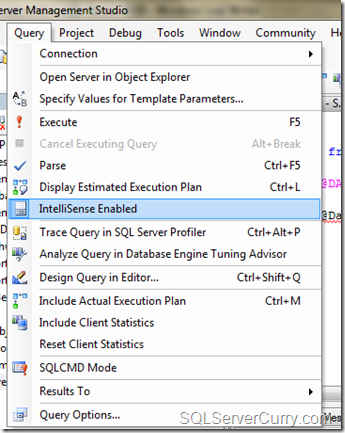


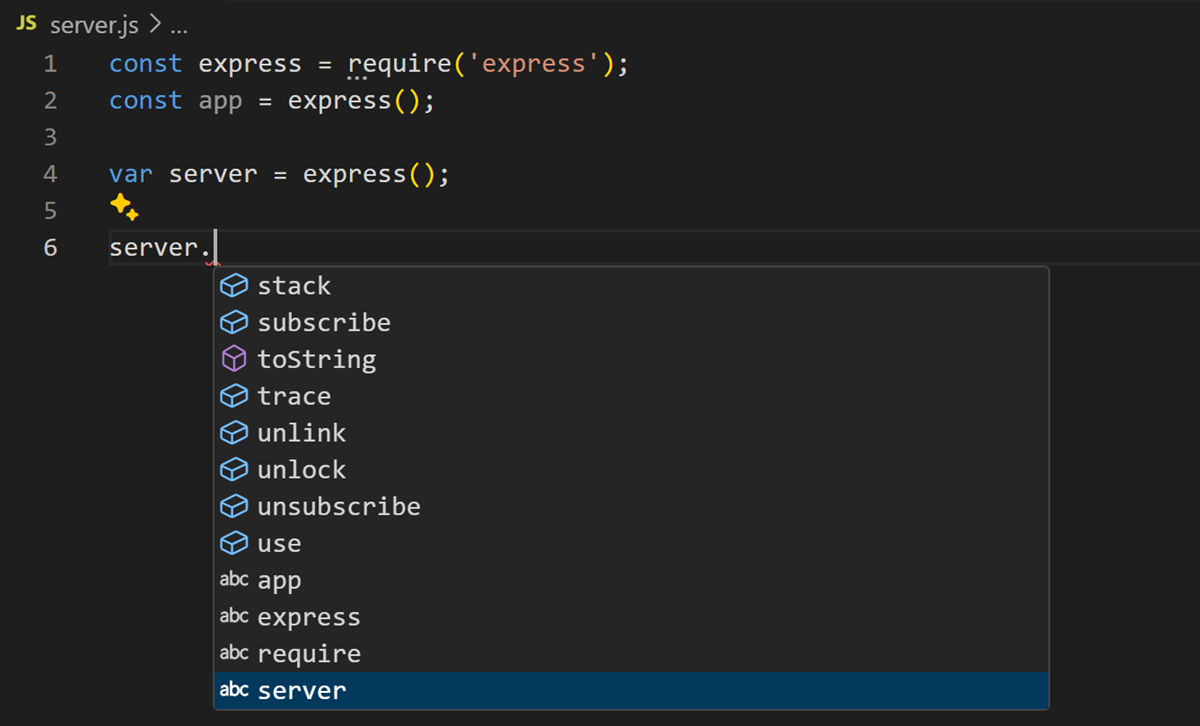






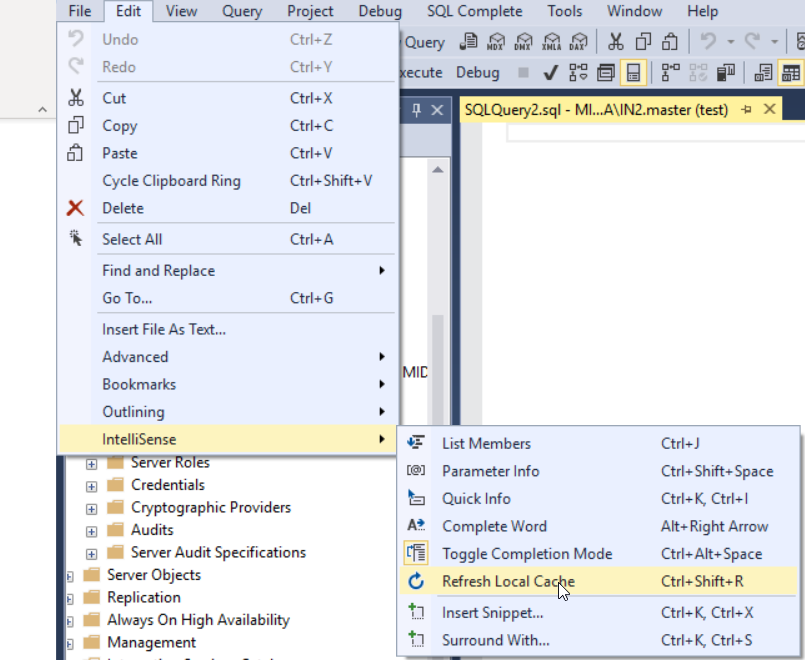


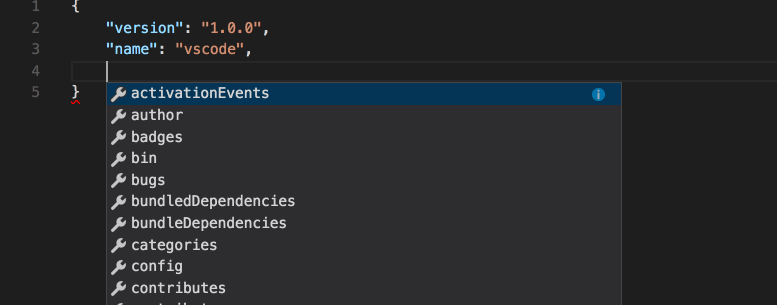

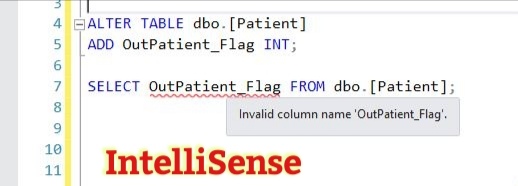
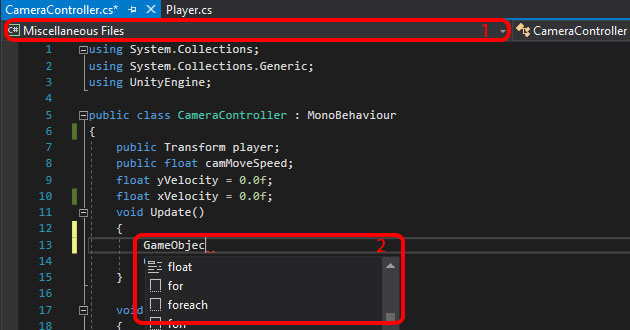








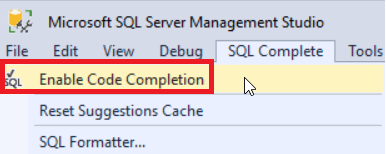
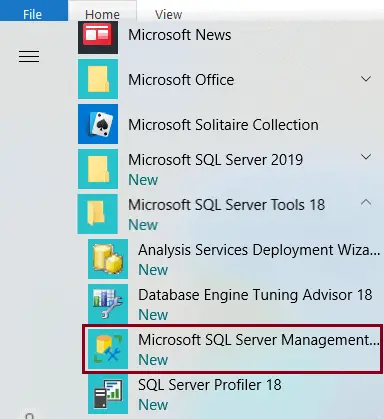



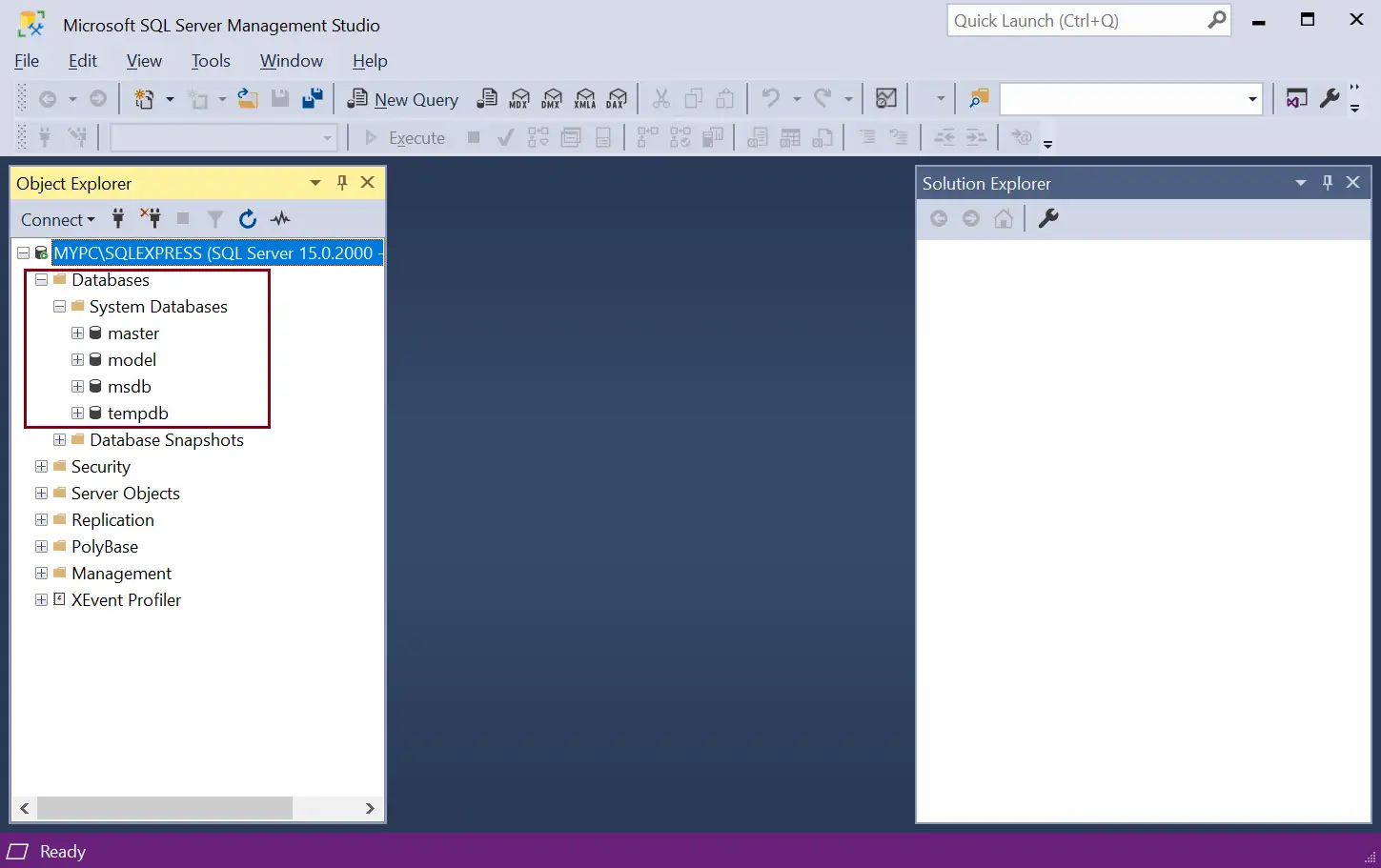


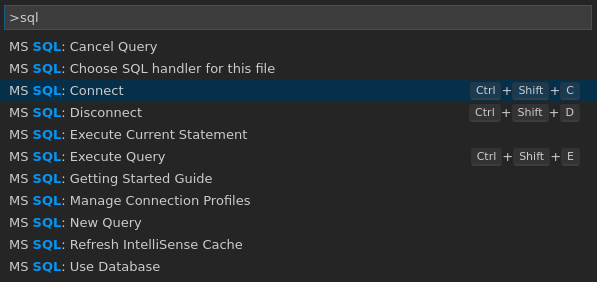


Article link: sql management studio intellisense not working.
Learn more about the topic sql management studio intellisense not working.
- IntelliSense is not working in SQL Server Management Studio
- sql server – IntelliSense not working but it is enabled
- Identify issues with IntelliSense (SSMS) – SQL Server
- Configure IntelliSense (SQL Server Management Studio)
- SQL Assist and Auto-Complete – DBeaver Documentation
- How to Enable and Refresh IntelliSense in SQL Server …
- Troubleshooting IntelliSense in SQL Server Management …
- SSMS IntelliSense completion mode does not work
- SQL IntelliSense and Autocomplete in SSMS | Redgate
- Using and troubleshooting SQL Server IntelliSense – SQLShack
- Intellisense in SSMS doesn’t work any more – SteGriff
See more: https://nhanvietluanvan.com/luat-hoc/